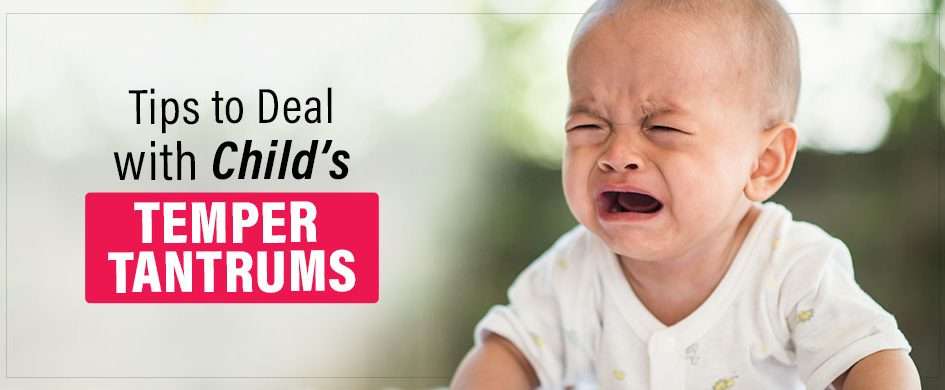
Tips to Deal with Child’s Temper Tantrums
- by Baby Organo
- 1 min 54 sec
Table of Contents
Do you often see your child’s cute little face suddenly turn red in anger? Or does your kid throws anything that comes in handy when things don’t happen the way they want? It can be challenging for parents to hold their breath when toddlers typically throw tantrums, specifically in public places.
While some parents may also feel miserable or think there’s a fault in their parenting due to their child’s uncontrollable tantrums. But, that’s not the case because temper tantrums are an integral part of a child’s development. Kids have their reasons for outbursts, meltdowns, or any negative emotions they express, and children don’t process the emotions as adults do. Moreover, it takes time for kids to work out their conflicts in socially acceptable ways. Therefore, being parents, all we need to do is tactfully handle the child’s aggression.
We know it can be a challenging task, and that’s why we’ve curated a list of ways to tame your child’s aggression and temper tantrums.
Ways to tame a child’s temper tantrums
Don’t stop your kid from expressing themselves
Anger, sadness or fear, either negative or positive, remember to never stop your kids from expressing their emotions. Some things might be petty enough for us but a big reason for the child to lash out. Rather than stopping your kiddo from expressing their aggression, let them take it all out and regain their self-control. Let that child vent until the tantrums happen in a non-destructive manner.
Distraction is the key
When a child is in the learning process of communicating and fails to express what they want, that causes anger. If you see your child throwing temper tantrums, try to distract them. Distracting doesn’t mean that you ignore their aggression, but you try to add up a stimulus that helps to change their emotions. When your baby becomes aggressive, try to slide into their favourite activity. For example, the kid is furious because he didn’t get to have extra candies, but you know that he loves to go to the park. So, offering to take your child to a park will work as a perfect distraction from their temper tantrums.
Immediately show affection
When kids express unexplainable temper tantrums, all they want is to be heard, held and hugged. Instead of lashing out at your munchkin, step into their shoes and hug them. Give your kiddo a big firm hug, hold them tight and let them know that you care irrespective of their behaviour. This gesture will help them calm down and make the child feel secure.
Take it easy
We know it’s not but take it easy. All kids go through this and, of course, every parent. A child throwing temper tantrums is normal, and a parent losing their calm is normal; what isn’t normal is to exaggerate your reactions to their actions. People mostly judge parents’ response to a child’s meltdown, so you have to take it super easy, especially in public places. Act calm and composed even when you’re having an inside volcanic outburst; behave as if the situation is under control and your child throwing temper tantrums is normal enough.
Change the location during public tantrums
We often witness kids throwing temper tantrums at the supermarket or any public place. If your child has a public tantrum, gently carry them to a different location. You can take them to a place where you both can have a conversation or shit to the bathroom where they can express why they’re behaving that way. Once they pour the anger out, hug, kiss or stroke the child’s back and say it is okay. However, if the tantrum continues, carry the kid to the car and head home securely.
Talk it out
Communicating with a child about their outburst of negative emotions is the best way to prevent the same behaviour again. When you notice that a child has regained their self-control after a meltdown, sit with them and talk about how they behaved. Ask the reason for such behaviour, validate their feelings and say that you understand what they’ve been through.
One of the best techniques you can use is pointing out such emotions in others. When you watch a movie with your kid or read books, ask and explain why that character is feeling that way. This exercise will teach the kid to be empathetic.
There are no set rules or a book that comes in handy to teach how to tame a child’s tantrum. Being a parent, all you need to do is keep calm and teach your child the better ways to express themselves.

